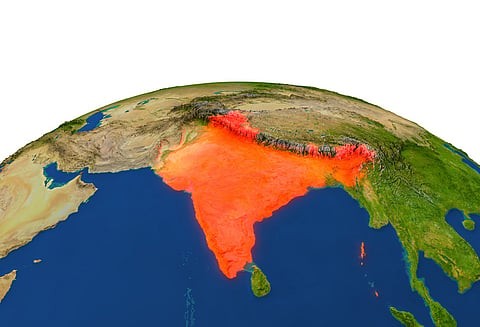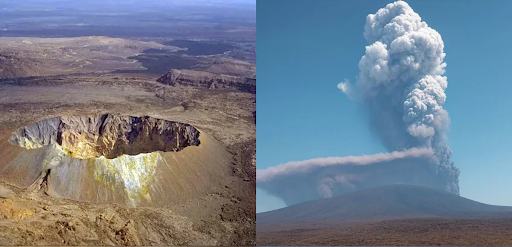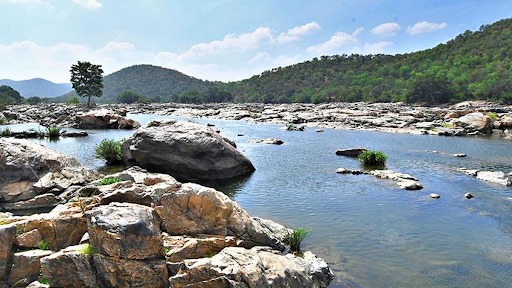



The 2004 Indian Ocean earthquake, with a magnitude of 9.1, triggered a devastating tsunami that affected 15 countries, causing over 227,000 deaths and displacing 1.7 million people. Originating from the Sunda

Disclaimer: Copyright infringement not intended.
It has been 20 years since the 2004 Indian Ocean tsunami killed hundreds of thousands of people and led to large-scale devastation across 15 countries.

Origin and Cause: The earthquake had a magnitude of 9.1, making it the third largest earthquake [Other two: Chile, 1960 (magnitude 9.5) and Alaska, 1964 (magnitude 9.2)] recorded globally since 1900.
The earthquake originated in the Sunda Trench, where the Indo-Australian plate is subducting under the Burmese microplate (part of the Eurasian plate).
Geographic impact: It affected a staggering 1,300 km from Sumatra in the south to the Cocos Islands in the north.
Death and displacement: The tsunami resulted in an estimated 227,000+ deaths, making it the deadliest tsunami in recorded history.
More than 1.7 million people were displaced due to the destruction of homes and infrastructure.
Lessons for India: India did not expect such a large event along India's east coast, as the only previous tsunamis occurred in 1881 (from a large earthquake near Car Nicobar Island) and 1883 (from the Krakatoa explosion), both of which produced only small waves. .
Reduction in mortality: The 1999 Super Cyclone Odisha killed over 10,000 people, while Cyclone Yaas (2021) resulted in less than six deaths, showing that India has made significant progress in Disaster Risk Reduction (DRR).
However, damage to infrastructure caused by cyclones is still a concern. For example, Cyclone Dana (2024) caused widespread damage in Odisha, estimated at Rs 616 crore.
|
Initiative |
Details |
|
Early Warning Systems |
Indian Tsunami Early Warning Center (ITEWC) was established in 2007 by the Ministry of Earth Sciences. |
|
Operates at INCOIS, Hyderabad, using seismological stations, bottom pressure recorders, and tidal stations to detect tsunamis. |
|
|
Functions as a tsunami service provider for IOTWMS, part of the Global Tsunami Warning and Mitigation System. |
|
|
Utilizes DART buoys to track pressure changes on the seafloor. |
|
|
Real-Time Monitoring |
Advanced ocean monitoring systems capable of detecting tsunami-producing earthquakes and issuing warnings within 10 minutes. |
|
India became the fifth country with an advanced tsunami warning system, joining the US, Japan, Chile, and Australia. |
|
|
Sea-level monitoring stations increased from 1 in 2004 to 14,000 globally. |
|
|
Technological Advances |
Use of improved algorithms and faster supercomputers for rapid modeling and accurate predictions of tsunami behavior. |
|
Tsunami Geological Research |
Research led by Brian Atwater explored mangrove swamps and coastal areas to uncover evidence of historical tsunamis in regions like the Andaman and Nicobar Islands and Mahabalipuram. |
|
Slow Landslide Research |
Studies of seismic landslides at plate boundaries to understand pre- and post-earthquake processes. |
|
Identified significant ground movement in South Andaman before the 2004 megathrust earthquake. |
|
|
Nuclear Power Plant Vulnerability |
Evaluated tsunami hazards to nuclear plants like Kalpakkam. |
|
Automatic shutdown of the Kalpakkam plant due to rising water; reactor restarted after six days. |
|
|
Flood Studies |
Mathematical tsunami modeling to determine flood limits and assess coastal infrastructure risks. |
|
Focus on High-Risk Areas |
Identified vulnerable regions like the Makran coast (Iran and Pakistan) and Myanmar coast. |
|
Studied the potential impact on Mumbai and nuclear reactors if a tsunami originates from the Makran coast. |
|
|
Global Cooperation |
UNESCO’s IOC established global tsunami warning services across ocean basins after the 2004 tsunami. |
|
Enhanced international coordination for earthquake and tsunami monitoring. |
A tsunami is a series of waves caused by a sudden and large displacement of the ocean.
The most common triggers are large earthquakes under or near the ocean floor, but other causes include landslides, volcanic activity, certain weather conditions, and meteorite impacts. Sources of tsunami generation
Tsunamis usually occur along major fault lines, especially around the Pacific Ring of Fire, but can also be triggered by landslides or volcanic eruptions far offshore.

Source:
|
PRACTICE QUESTION Q.Discuss the significant advances in tsunami science and early warning systems that occurred in the aftermath of the devastating 2004 Indian Ocean earthquake and tsunami. (250 words). |







© 2025 iasgyan. All right reserved